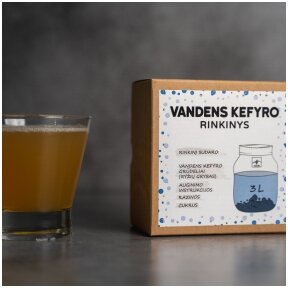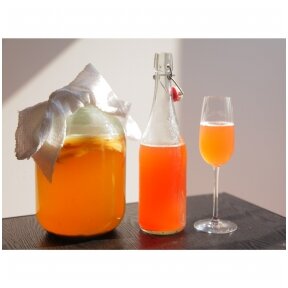Probiotics have become very popular in recent years as more and more people realise the crucial role they play in maintaining a healthy intestinal microflora. Probiotics are live microorganisms, also known as good bacteria, which are thought to have a positive effect on the human body, especially the digestive system. Gastrointestinal bacteria are essential to digestive physiology, as without them, various health problems and diseases can occur. Probiotics are often thought to be found only in pharmacies, but they can also be found in foods such as yoghurt, sauerkraut, and kimchi. These are the usual sources of probiotics, but there is another lesser-known but equally effective alternative - water kefir. In this post, we'll talk about what water kefir is and its benefits.
In recent years, kombucha, a fermented tea drink that has been used for centuries and originated in the north-eastern region of China as a therapeutic remedy, has become very popular, spreading rapidly throughout Europe until World War II. Kombucha is made by fermenting sweet tea with a culture of bacteria and yeast, resulting in a drink with antioxidants and probiotics. Although you can easily find them in grocery stores or cafés, making kombucha at home is a very interactive and easy experience. Not only is it a fun and rewarding DIY project, but it is also an opportunity to make a drink to your taste. In this post, we will describe the steps from scratch, but before we start the process, let's discuss the most important things you need to start making kombucha.
Kombucha, water kefir, and Jun kombucha are among the most popular fermented drinks these days. While they may look similar at first glance, they have differences and interesting similarities that are worth exploring. In this post, we'll dive into these drinks, highlighting their main differences and similarities.
A kombucha scoby is the starter culture that allows kombucha to start fermenting. This mushroom is at the heart of the kombucha production process, and if you want to have a regular supply of this wonderful drink, it is crucial to learn how to store it properly. In this post, we will introduce you to the peculiarities of storing the scoby to keep it intact and ready for the next fermentation.
Wondering what to do with leftover teas or other goodies in your home? Use this to flavour your kombucha! Although we recommend using traditional teas such as black tea or green tea for the first fermentation, you can experiment with the second fermentation!









